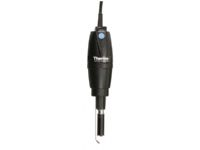
Dissolved oxygen is often referred to as DO. It is a measure of the amount of oxygen in a solution. While some gases react chemically with water to form new compounds, gases like nitrogen and oxygen dissolve in water, without a chemical reaction and exist as microscopic bubbles between water molecules.
Air has a constant percentage of oxygen, approximately 20.9 %. When air comes in contact with water, the oxygen in air will dissolve in the water. There are a number of factors that determines how much oxygen dissolves in water:• Is there sufficient time and adequate mixing to fully saturate the water.
- Air substances present in the water that consume the oxygen
- Water Temperature: The solubility of oxygen reduces as temperature increases. Therefore the colder the water, the more dissolved oxygen it contains
- Air Pressure: As atmospheric pressure decreases with altitude, the amount of dissolved oxygen in water decreases
- Salt Content: The amount of dissolved oxygen increases as salinity decreases. Therefore freshwater holds more oxygen than saltwater
Membrane electrodes have been used for a many years to measure DO in water but optical DO probes are becoming more widely used as they offer a number of benefits to the user.
Documentation
 Dissolved Oxygen Probes
Dissolved Oxygen Probes